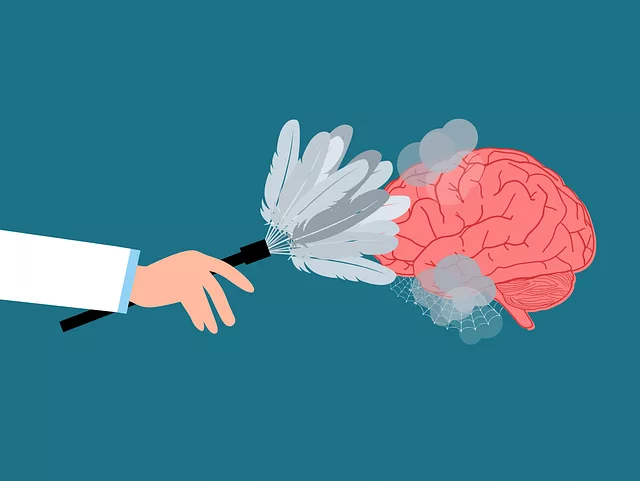Burnout among healthcare providers at Kaiser's Inpatient Mental Health facility in Broomfield is a pressing issue due to long hours, high-stress environments, and heavy patient loads. To combat this, Kaiser should focus on public awareness campaigns, Emotional Intelligence training, and community outreach initiatives to reduce mental health stigma, encouraging staff to prioritize their well-being. The Broomfield campus actively addresses burnout through open communication, resources for crisis intervention, and stress management programs, fostering a culture of resilience. These proactive measures are essential for ensuring a dedicated healthcare workforce delivering high-quality patient care.
Healthcare provider burnout is a growing concern, impacting not just individual well-being but also patient care. This article explores effective strategies to prevent burnout among healthcare workers, drawing insights from notable cases like the Kaiser Inpatient Mental Health Broomfield study. We’ll delve into understanding burnout, identifying early warning signs, and implementing robust measures to enhance resilience in healthcare environments, ensuring better outcomes for both staff and patients.
Key topics include recognizing red flags, fostering a supportive culture, and providing accessible mental health resources—lessons learned from the Kaiser facility’s experience.
- Understanding Burnout Among Healthcare Providers: The Kaiser Inpatient Mental Health Broomfield Conundrum
- Identifying Red Flags: Recognizing Burnout in its Early Stages
- Implementing Effective Strategies: Preventing Burnout and Fostering Resilience in Healthcare Workers
Understanding Burnout Among Healthcare Providers: The Kaiser Inpatient Mental Health Broomfield Conundrum

Burnout among healthcare providers is a growing concern, particularly within inpatient settings like those managed by Kaiser in Broomfield. The Kaiser Inpatient Mental Health Broomfield facility has faced challenges related to provider burnout, highlighting the need for effective prevention strategies. This issue often stems from long working hours, high-stress environments, and an overwhelming patient load, which can lead to emotional exhaustion, depersonalization, and reduced personal accomplishment.
The complex nature of this problem necessitates a multi-faceted approach. Public awareness campaigns can play a crucial role in educating both the public and healthcare professionals about burnout and its signs. Additionally, fostering Emotional Intelligence through training programs has shown promise in enhancing providers’ coping mechanisms and interpersonal skills. Community outreach program implementation could also help reduce the stigma surrounding mental health issues, encouraging healthcare workers to prioritize their well-being.
Identifying Red Flags: Recognizing Burnout in its Early Stages

Burnout is a significant concern within healthcare, especially for providers working in demanding settings like inpatient mental health facilities. Early recognition is key to prevention. Red flags include consistent feelings of exhaustion, cynicism or detachment from work, and reduced professional satisfaction. At Kaiser’s Broomfield campus, staff are encouraged to identify these signs, as they often indicate a need for support.
The presence of prolonged stress can lead to severe consequences, including increased error rates, decreased patient care quality, and even physical health issues. Does Kaiser have inpatient mental health services in place that include crisis intervention guidance and anxiety relief strategies? Absolutely. By fostering an environment where open communication is encouraged and resources for confidence boosting measures are readily available, facilities like Broomfield aim to address burnout proactively.
Implementing Effective Strategies: Preventing Burnout and Fostering Resilience in Healthcare Workers

In preventing healthcare provider burnout, Kaiser’s inpatient mental health services in Broomfield offer a strategic model. Beyond addressing acute care needs, these facilities implement comprehensive programs aimed at stress management and coping skills development for staff. By fostering a culture of resilience within the workforce, these initiatives not only enhance employee well-being but also improve patient outcomes.
A key strategy involves community outreach program implementation, where healthcare professionals engage in proactive measures to mitigate stress and promote work-life balance. These programs encourage open communication, peer support, and healthy coping mechanisms, ultimately creating a supportive environment that enables staff to thrive both personally and professionally. Such initiatives are vital steps towards ensuring a sustainable and dedicated healthcare workforce.
Healthcare provider burnout is a pressing issue, but with the right strategies, it can be mitigated. By understanding the factors contributing to burnout, such as high workloads and emotional demands, as seen in the Kaiser Inpatient Mental Health Broomfield case, healthcare organizations can implement effective solutions. Identifying red flags early on through regular check-ins and self-assessments is key. Through fostering resilience, promoting work-life balance, and providing access to mental health resources, healthcare facilities can prevent burnout and enhance employee well-being. These strategies not only benefit individual healthcare workers but also improve patient care and organizational success.






